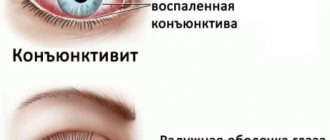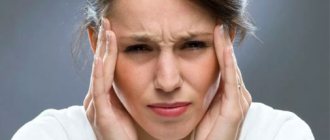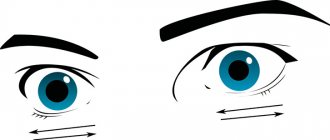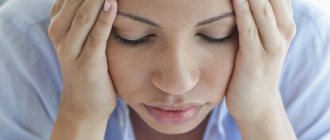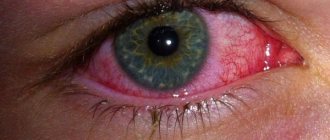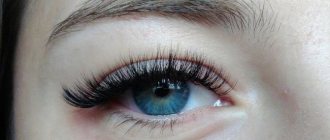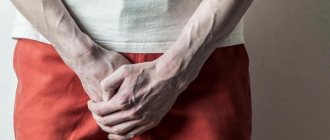Many people have experienced headaches in their lives, and if attacks appeared more than once, they could differ in strength and character.
In some cases, pain appears in the back of the head when bending forward, and this symptom should alert you.
If such discomfort occurs, it is necessary to consult a doctor, as this can be a serious deviation.
Causes of headaches with sudden movements
Pain may occur with sudden bending or turning of the head. This is due to pathologies of blood vessels, nerves, pressure changes and other reasons. Pain can also appear in a healthy person due to intense physical activity, stress and disruption of the sleep schedule. Most often, painful sensations go away after proper rest, but in some patients they indicate serious disorders that require treatment.
Migraine
Migraine is an acute headache that manifests itself without organic pathologies of blood vessels, brain and other organs. Doctors associate it with neurological disorders or vascular weakness. It has also been established that migraine is more often of hereditary origin and occurs simultaneously in several family members. It has a chronic course and manifests itself in the form of attacks, which can be caused by internal or external factors. Thus, migraines often occur against the background of climate change, stress, insomnia, and intense training.
The attack can last up to several days and consists of four phases:
- The prodromal period is a few days before the onset of headache. During this time, many patients experience weakness, dizziness, insomnia, as well as hearing and vision impairment. However, symptoms may be mild and unnoticeable.
- Aura is a neurological disorder that occurs immediately before or during the onset of a headache. An aura can include visual, auditory and movement (motor) disturbances, as well as combinations thereof. Characteristic symptoms are the appearance of dark circles in the field of vision, tinnitus, nausea and dizziness, and deterioration in coordination of movements. About 50% of migraine cases occur with aura; in other patients it is absent. (see Migraine with aura).
- The pain phase lasts no more than a few hours in children and 1–3 days in adults. The pain is sharp, severe, often spreading to the temples and the side of the head. It intensifies with any physical activity and sudden movements of the neck. During this phase, nausea and dizziness, weakness, and impaired consciousness and concentration may also be felt.
- Postdromal period - occurs when the headache goes away. A few days after the attack, you may feel worse. Patients experience weakness, gastrointestinal disorders, mood swings and other symptoms that disappear within 1–2 days, depending on the intensity of the attack.
Migraine often affects only half of the head, but can spread to its entire surface. The headaches are severe and worsen when turning and tilting the head, as well as with any sudden movements of the neck. Mild attacks can be relieved with painkillers, but for acute pain, the doctor will prescribe special medications against migraines.
Read more in the material: Chronic migraine
Hypertension
The blood pressure of a healthy person at rest is 120/80 mm. rt. Art. It is easy to measure at home using a tonometer. If the result is 130/90 mm. rt. Art. and more, we can talk about hypertension (high blood pressure). It is important that hypertension is physiological - blood pressure normally increases after exercise. To obtain accurate data, they were shown filming during rest.
Hypertension is a chronic disease that is manifested by increased blood pressure. It is most often diagnosed in middle and old age, but can also occur in young adults and children. Its causes are congenital disorders of pressure regulation mechanisms and acquired vascular diseases. During an attack, blood pressure increases sharply, which is accompanied by the following symptoms:
- throbbing headache, which intensifies when tilting and turning the head - it can spread to the temples, back of the head, frontal part;
- deterioration of vision, hearing, concentration;
- numbness of fingers and toes;
- swelling, redness of the skin of the face and mucous membranes;
- the appearance of small subcutaneous hematomas, especially in the face;
- arrhythmia, uneven and rapid pulse.
People who are overweight and those who lead a sedentary lifestyle are at risk. To treat hypertension, your doctor will select a special diet and prescribe medications to correct your blood pressure. They must be taken in a course to prevent another exacerbation.
Read more in the material: Headache with hypertension
Diseases of the cervical spine
The cervical region contains important vessels and nerves that lead to the brain. They are located in the protective canal formed by the openings between the vertebrae and on their lateral processes. In a healthy person, between the bone segments there are intervertebral discs - dense, elastic cartilaginous formations that absorb shock during movement. Their damage can be caused by various diseases, but leads to acute pain and affects general well-being.
- Cervical osteochondrosis is a chronic process of destruction of intervertebral discs. It can be caused by intense exercise, a sedentary lifestyle, or a disruption in the flow of blood to the cartilage. It leads to compression of the nerve roots and acute headaches, which intensify with neck movements. (see Headache with osteochondrosis of the cervical spine)
- Protrusion is a protrusion of cartilage beyond the spinal column. The process is accompanied by headaches and decreased neck mobility. In advanced cases, a hernia forms - the outer fibrous membrane ruptures, and the liquid contents (nucleus pulposus) leak out.
- Spinal curvature can be congenital or acquired. The process is often caused by incorrect posture and intense stress during the period of growth and formation of the spinal column.
To treat diseases of the cervical spine, the doctor will prescribe a comprehensive treatment regimen. It may include exercises to strengthen the neck muscles, massage and physiotherapy, as well as a course of medications. Painkillers and anti-inflammatory drugs, muscle relaxants, and warming ointments help with these diseases.
Vascular diseases
Atherosclerosis is one of the reasons why headaches occur during sudden movements. This is a chronic disease in which lipoproteins and cholesterol are deposited on the inner walls of the arteries. These deposits can form plaques, cause narrowing of the lumen of blood vessels and reduce the elasticity of their walls. This leads to a deterioration in blood flow to the brain and painful sensations. At the first signs of atherosclerosis, it is important to follow a low-fat diet, as well as take medications to remove excess cholesterol.
Read more in the material: Constriction of cerebral vessels
Diseases of the ENT organs
Headaches with sudden movements can also be caused by inflammation of the ears, mucous membrane of the nasopharynx or respiratory tract. Colds occur when a viral infection occurs and the body's immune defense is simultaneously reduced. It is important to get tested if the following symptoms worsen:
- fever for 3 days or more;
- the appearance of discharge from the nose or ear canals;
- weakness, headache;
- pain in the head area.
A characteristic symptom of sinusitis is a sharp headache when tilting the head down. If it is confirmed, the doctor will prescribe an additional x-ray examination. Treatment for most diseases of the ENT organs includes antibiotic therapy, lavage of the nasal passages, the use of ear drops and vasoconstrictors.
Other reasons
Headaches often appear due to stress, nervous tension, changes in atmospheric pressure and disturbances in sleep schedule. However, if they occur frequently, including after exercise, it is important to get tested. These symptoms may indicate the following disorders:
- brain tumors;
- neuritis - inflammation of the nerves that run in the neck and head;
- poisoning – associated with the intake of poisons and toxins from food, medicines, gaseous substances;
- stroke is one of the dangerous conditions that occurs when there is a sudden disruption of blood circulation in the brain; (See stroke)
- temporal arteritis is a specific disease in which inflammation of the temporal artery occurs;
- cluster pain is a rare type that is very severe. (see Cluster headaches)
Headaches are not a separate disease, but a symptom characteristic of many disorders.
Doctors do not recommend enduring painful sensations. As first aid, you can take a pain reliever, but then it is important to undergo a full examination.
Types of pain
In medical practice, doctors distinguish several types of headaches.
These include the following:
- Tensionous. Occurs as a result of an unstable emotional state due to stress and tension. A person experiences a pressing sensation, usually in the eye area, and discomfort often occurs in the evenings. Tension is the most common type diagnosed by doctors.
- Migraine. This type can appear in adults and children. The headache is severe and symptoms appear in the back of the head and other parts. Treatment requires medical assistance.
- Cluster. This sensation is quite rarely diagnosed, but the symptom itself is intense. The condition cannot be treated with conventional medications. Often this type appears in the male half of the population, the sensations are pulsating, and are complemented by a runny nose and the production of tears. Fainting and difficulty breathing are possible.
- Hungover. This type occurs as a result of drinking a large amount of alcohol. The body becomes dehydrated, and the secretion of serotonin also worsens, which provokes discomfort when bending over, and the condition may progress to a migraine.
Regardless of the types described, it is better to consult a doctor for diagnosis, especially if the symptoms do not stop and do not go away within a couple of days.
First aid and features of pathologies
To determine the exact causes, you need to understand where the headache hurts. If symptoms occur when bending the back of the head, you will need to consult a neurologist or therapist.
Often a person can remain in one position for a long time, due to which the neck and other parts of the body become numb and pain appears.
Such symptoms should pass quickly and should not be accompanied by other sensations.
When bending over, most often the entire back of the head hurts, pressing sensations appear in the eyes, and if there is a cough, the patient’s condition becomes worse.
To understand when to call an ambulance, you need to know the main warning signs:
- Sharp pains appear in the head, which continue throughout the day and do not go away.
- Pain in the back of the head becomes stronger every hour.
- If you haven’t had a headache throughout your life and it appears for the first time after 50 years, the sensations are very acute.
- With discomfort, vision becomes worse, an unpleasant sensation appears when touching the ears, and when bending over, the symptoms intensify, so such movements cannot be performed.
- The temperature begins to increase and when the head is tilted, the condition worsens.
- Eyes turn red.
The described symptoms are very dangerous and doctors can stop them. In other cases, standard treatment can be carried out, as presented below.
Diagnostic methods
At home, it is impossible to determine exactly why a headache occurs. This information is necessary to choose an effective treatment that will affect not only the symptoms, but also their cause. The doctor will prescribe a set of examinations, which may include:
- X-ray of the cervical spine is the easiest way to diagnose osteochondrosis and other neck diseases;
- Dopplerography - ultrasound of the vessels of the neck and head using a contrast agent;
- MRI, CT – examinations that will allow you to accurately visualize intervertebral protrusions and hernias, neoplasms and hematomas of the brain, the consequences of a stroke;
- Blood tests will show inflammatory processes and metabolic disorders.
The Clinical Brain Institute offers individual headache diagnostic programs. The main advantages of our center are precise modern equipment and comfortable conditions for a hospital stay during the period of examination and treatment. Learn more about our programs.
Treatment of headaches
The treatment regimen will include steps to relieve symptoms and eliminate the causes of the headache. It is prescribed only after an examination, when it becomes known why pain and discomfort occur with sudden movements. It may include the following methods:
- drug treatment - includes taking antibiotics, muscle relaxants, painkillers and anti-inflammatory drugs;
- therapeutic exercises – at home it is useful to perform exercises to strengthen and relax the neck muscles;
- physiotherapy - targeted effects of a magnetic field, electric current, heat on painful areas;
- massage - the procedure must be performed by a specialist.
Doctors at the Clinical Brain Institute warn that self-medication can lead to dangerous consequences and the gradual development of chronic diseases. The effectiveness of the prescribed regimen depends not only on taking medications, but also on the implementation of other prescriptions: a therapeutic diet, exercises at home and other procedures.
Treatment methods
Before treatment, the patient is diagnosed, which will allow us to determine the exact causes of the ailment.
To do this, doctors use:
- X-ray of the neck.
- Computed tomography or MRI.
- They collect tests that can show inflammation.
The principle of treatment itself will be different, depending on the provoking factors:
- Unpleasant sensations that are caused by stress on the emotional or physical state can be relieved with the help of non-hormonal anti-inflammatory drugs, as well as analgesics. For this, Ibuprofen or Paracetamol is used.
- If a migraine attack occurs, which becomes stronger when tilting the head, then analgesics will not help. You need to use triptans, which can only be prescribed by a doctor, and write a prescription for them. Without it, it is impossible to buy the drug.
- Cluster head pain can be relieved with oxygen treatment, as medications will be of no use.
- If symptoms arise as a result of a hangover, then conventional headache remedies, as well as drugs used for intoxication, will help cope with the discomfort. It is recommended to take more time to rest in order to recover quickly.
- If unpleasant sensations radiate to the ear, then it is more likely that the person has a cold. Anti-inflammatory drugs must be used for treatment.
- If you experience discomfort after a head injury, as well as rupture of blood vessels that can cause bleeding, you should consult a doctor, or better yet, call an ambulance, especially if your limbs go numb and the person cannot speak normally and loses coordination. The sooner treatment is given, the more likely it is that complications will not appear.
- Temporal arteritis can be treated with steroid-type medications, which can relieve inflammation of the blood vessels.
- In case of osteochondrosis, discomfort can be relieved with analgesics and antispasmodics. Additionally and very usefully, perform therapeutic exercises, massage the head and neck, and also use physiotherapeutic procedures.
Many people are trying to reduce the consumption of medications and other chemicals, so they try to treat with folk remedies.
Such therapy can be beneficial and in itself does not greatly harm the body, but it is better to use traditional medicine as additional methods of treatment.
All products must be used after prior consultation with a doctor.
Prevention methods
Headaches are rarely a consequence of congenital pathologies; more often they arise as a result of acquired diseases. They can be prevented if you follow simple recommendations from doctors:
- monitor your posture throughout the day and while working at the monitor;
- do gymnastics for your back and neck every day;
- choose proper nutrition, give up fatty foods and fast food;
- get rid of bad habits.
Headaches are a dangerous symptom that may indicate dangerous diseases. At the Clinical Brain Institute, you can undergo a comprehensive diagnosis and determine what is causing it. Experienced doctors will select an individual treatment regimen to not only get rid of pain, but also stop the further development of diseases.
Clinical Brain Institute Rating: 5/5 — 1 votes
Share article on social networks
Prevention
To prevent symptoms from reoccurring after treatment, it is necessary to use preventive measures that will help to generally normalize the condition of the body.
To do this you need:
- Walk outdoors more often, ideally before bed. This allows you to get enough oxygen.
- It is necessary to provide constant rest to the body.
- For prevention, it is useful to drink infusions and decoctions of medicinal herbs. Chamomile, mint or lemon balm are used for this. They can relax and calm the nervous system and reduce spasms.
- You need to monitor your immune system and strengthen it regularly. To achieve this, proper, balanced and healthy nutrition is used. You can take vitamins for prevention.
- You should engage in sports or regular exercise, which is good for bones and blood vessels. This requirement is especially important for people with sedentary work.
- You should avoid anxiety and stress, which can cause discomfort and disorders of various kinds. After a hard day, it is recommended to relax, take a bath with essential oils or simply meditate.
The described treatment methods will help to quickly stop the condition and find a way out of the situation, and prevention will be useful in the future.
If the ailments do not go away, you should consult a doctor for help.
